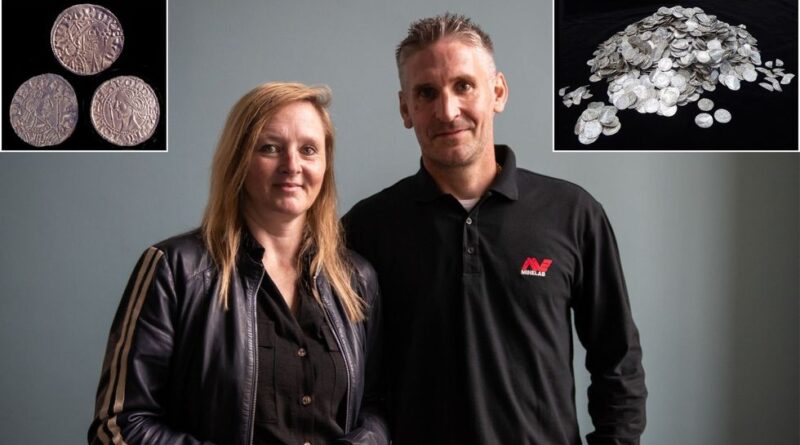Hidden treasure sells at auction for £4.3million after 1,000-year-old coins found buried underground
A group of friends who found 2,500 Anglo-Saxon coins while out treasure hunting have finally cashed in for a record sum of £4.3million.
Former couple Adam Staples, 48 and Lisa Grace, 47, had been teaching five friends how to use metal detectors in a field in Somerset when they stumbled upon the Chew Valley Hoard in 2019.
They decided to split their half of the find equally for around £300,000 search, with the other 50 per cent going to the landowner, although they have had to wait five years to receive their money.
Staples, an auctioneer, said: “It’s like winning the lottery but then you can’t cash the ticket for five years.
“Coming to the British Museum a few days after we found the hoard, when they opened the front gates and we drove through crowds with a few million pounds worth of coins in the back of the car, was a surreal experience.
“And then it was Covid and five years of silence until we got to this point.
“It’s frustrating, but it’s still winning the lottery, so you feel like you can’t complain.
“We received the money a few weeks ago – I’ve bought a house and can now live mortgage-free.”
LATEST DEVELOPMENTS
Ellie grills Labour MP who declared £2K in football tickets – ‘How can we trust you?!’Aljaz Skorjanec makes BBC Strictly intervention as Tasha Ghouri faces background backlashScottish leaders blast SNP’s 24 genders list: ‘They should be fixing broken public services!’
The hoard is especially rare as almost half of its 2,584 coins appear to depict King Harold II.
Harold II, the last Saxon king of England, only ruled for 9 months before he was fatally shot through the eye by an arrow at the Battle of Hastings in 1066.
Coins from his reign are rare but are now included in the Chew Valley Hoard, which was sold for £3.3million in 2009.
Experts believe that the haul was likely buried in the chaos of regime change during William the Conqueror’s invasion.
The Southwest Heritage Trust acquired the treasure, financed by the National Lottery Heritage Fund and the Art Fund.
It will go display at the British Museum on November 26, before touring the UK.
It will then return to the county where it was dug up, going on permanent display at the Museum of Somerset.
The acquisition, which was also financed by grants from the Friends of the Museum of Somerset and the Somerset Archaeological and Natural History Society, took five years due to the Treasure Act’s lengthy regulations.

